 |
We launched AWS Marketplace in 2014, and it allows customers to find, buy, and immediately start using cloud-based applications developed by independent software vendors (ISVs). In 2018, we added the ability to add a Private Marketplace where you can curate a list of approved products your users can purchase from AWS Marketplace. Today we are adding a new feature so that you can create multiple Private Marketplace catalogs within your AWS Organizations. Each Private Marketplace can contain a different set of products to provide a tailored experience for particular groups of accounts.
Customers with diverse sets of users need to scale their governance to meet business needs. For example, a large enterprise with subsidiaries in different industries has varying software needs and policies for each subsidiary. IT administrators struggle with scaling their procurement process to address these differing needs across their organization and often revert to one procurement policy to govern their entire org. While there are exceptions, companies depend on time-consuming, manual processes to ensure the correct products are approved and procured. As a result, customers struggle to scale their procurement and governance process to meet their organization’s speed and agility demands.
After listening to customers explain these sorts of issues, we set about developing a solution to help, and the concept of multiple Private Marketplace catalogs was born. We call these Private Marketplace experiences. They represent the experience that your users will see when they browse their AWS Marketplace. Each experience is a collection of approved AWS Marketplace products that you, as an administrator, select and curate. You can add any of the 8000-plus products from AWS Marketplace to an experience and customize the look and feel by changing the Private Marketplace logo, wording, and color.
In the Private Marketplace admin portal, within the AWS Marketplace interface, you can create an Account group, which is essentially a way of grouping together a number of AWS accounts. You can then associate an experience with an Account group, enabling you to give different users distinct experiences. This association allows you to govern the use of third-party software subscriptions and ensure they adhere to your internal procurement policies.
To give you a flavor of this feature, I will create a new Private Marketplace experience.
How to Create a Private Marketplace Experience
I head over to the Private Marketplace interface and select the Experiences link; this lists the default experience called Private Marketplace Experience. I then press the Create experience button.

I give the experience a name and a description and click the Create experience button.
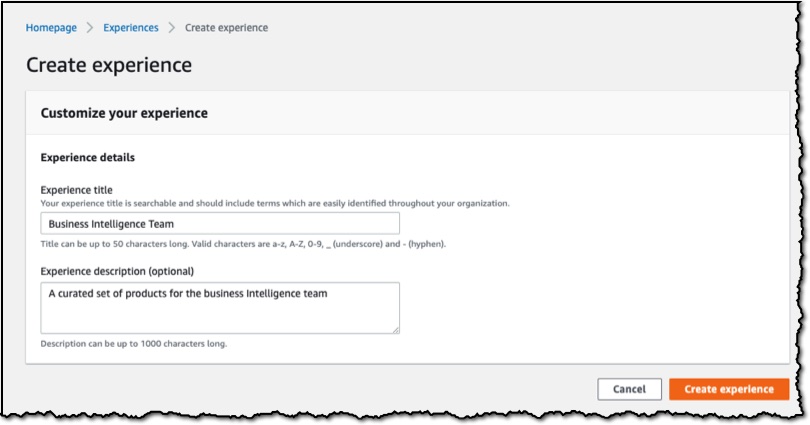
If I drill into the details for my newly created experience, I can then start to add products to my catalog. I use the search in the All AWS Marketplace products section and look for Tableau. I find the Tableau Server product and select it. I then click the Add button which adds the product to my catalog.
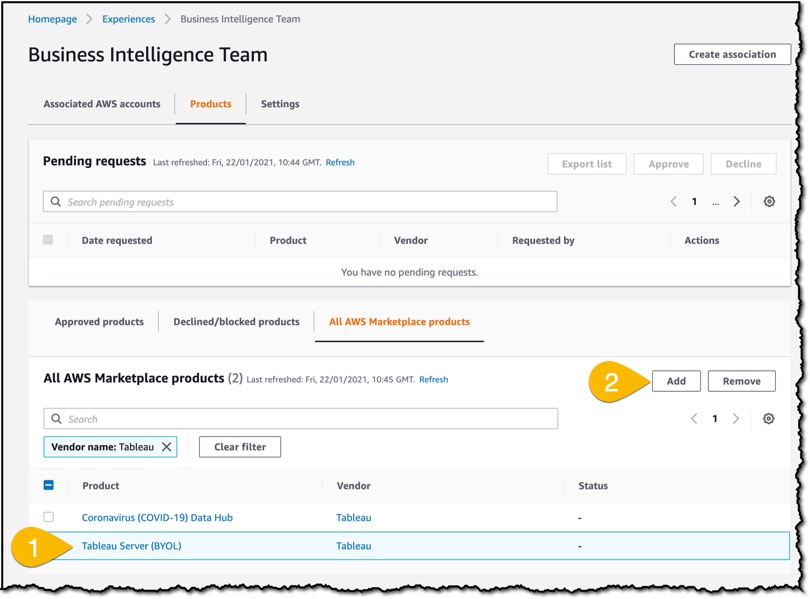
To associate this experience with a set of AWS accounts, I click on the Create association button; this allows me to create a new Account group.
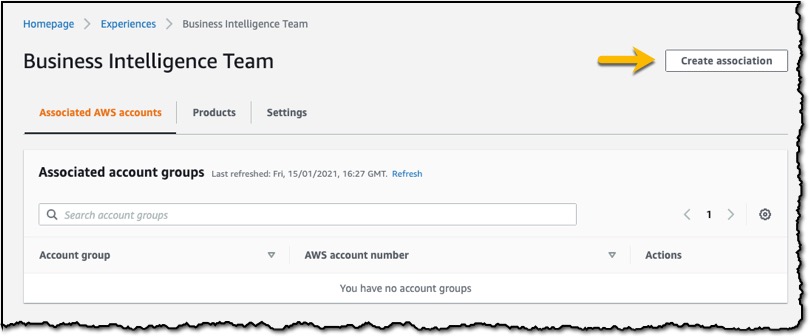
I give my account group the title Business Intelligence Group and add a description. I then associate AWS accounts that I want to be part of this group. Finally, I associate this group with the Business Intelligence Team experience I created earlier and finally click Create account group.
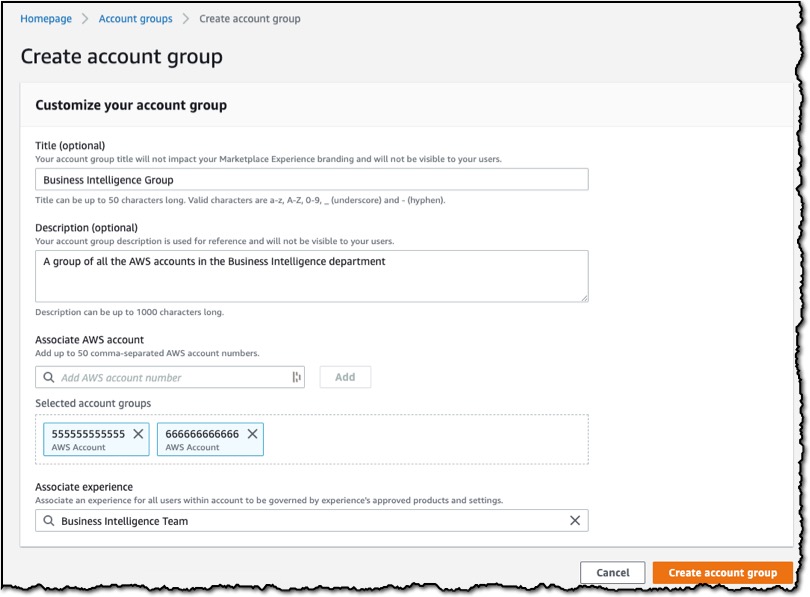
I now go to the settings for the experience and change the switch so that the experience is now live. On this screen I can also customize the look and feel of the Private Marketplace by uploading a logo, changing the color, and adding custom wording.
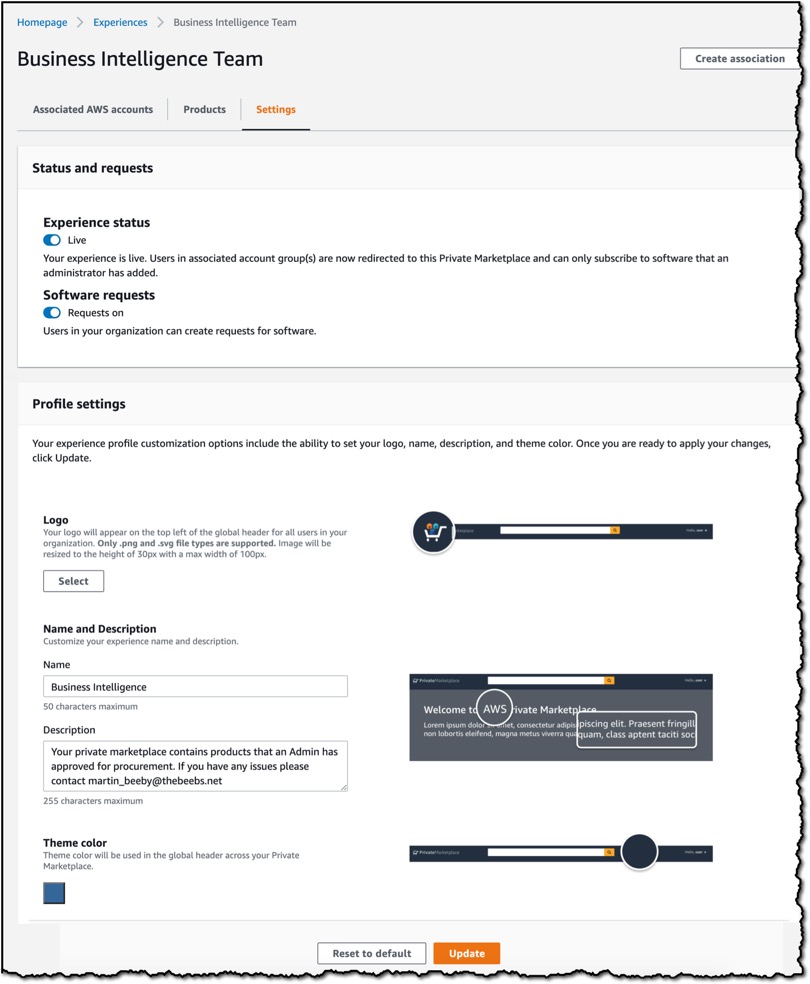
Now, if I log in and browse the AWS Marketplace using an account that is in the Account group I just created, I will see the Private Marketplace experience rather than the regular AWS Marketplace.
Available now
The ability to create multiple Private Marketplace catalogs is available now in all regions that support AWS Marketplace, and you can start using the feature directly from the Private Marketplace interface. Additionally, you can use the accompanying set of APIs so that you can integrate with existing approval or ticketing systems to simplify management across catalogs.
Visit the Private Marketplace page to get started and learn more. Happy curating.
— Martin



